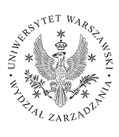Keywords
procyclicality, credit supply, bank loans, capital management, risk management, seemingly unrelated regression
Abstract
Procyclicality of credit supply, which refers to the simultaneous movement of credit issued to the non-financial sector alongside economic activity indicators, can create a destabilizing feedback loop between the banking system and the real economy. The impact of credit supply on the financial and real sectors may vary across different economies, and the interconnectedness between countries can magnify the effect. We conducted research examining procyclicality of loans provided by banks, analyzing data at the country level for 13 OECD countries for over 16 years (2005–2020). Our research findings indicate that the parameters measuring the procyclical effect are statistically insignificant when using the FE panel model. To showcase diversity of relationships under scrutiny across countries, we employed an OLS regression approach to estimate procyclicality for each country’s loans. This approach assumes a lack of interconnectedness between economies. We then introduced the Seemingly Unrelated Regression Equations (SURE) framework to examine how interconnectedness among countries affects the strength of loan procyclicality. Our analysis reveals the existence of procyclicality in many countries, and utilizing the SURE model further reinforces the phenomenon. Moreover, we found that bank-specifi c variables are more signifi cant as loan supply determinants than macroeconomic variables.
Recommended Citation
Pipień, M., & Anand, A. (2024). Cross Country Heterogeneity of Procyclicality of Bank Loans: Evidence from OECD Countries using the SURE Model. Journal of Banking and Financial Economics, 2023(20), 93-110. https://doi.org/10.7172/2353-6845.jbfe.2023.2.6
First Page
93
Last Page
110
Page Count
18
Received Date
15.05.2023
Revised Date
04.10.2024
Accept Date
09.10.2023
Online Available Date
28.12.2023
DOI
10.7172/2353-6845.jbfe.2023.2.6
JEL Code
E32, G21, G28
Publisher
University of Warsaw



